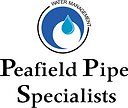Pipelines are the unsung heroes of modern infrastructure, responsible for transporting essential resources such as oil, gas, water, and chemicals over vast distances. While these networks are critical for various industries, their safe operation is paramount to prevent environmental disasters and human casualties. One of the key methods used to guarantee the integrity of pipelines is pressure testing. In this article, we will delve into the significance of pressure tests in maintaining pipeline safety, explore the process, and highlight their role in the broader context of ensuring long-term pipeline integrity.
Understanding Pressure Tests
Pressure tests, as the name suggests, involve subjecting pipelines to controlled pressure conditions to assess their structural soundness and detect potential vulnerabilities. These tests can be categorized into two main types: hydrostatic pressure tests and pneumatic pressure tests. Hydrostatic tests involve filling the pipeline with a liquid, typically water, and gradually increasing the pressure to evaluate its response. Pneumatic tests, on the other hand, employ compressed air or gas to gauge the pipeline’s integrity. The choice between these methods depends on factors such as pipeline material, diameter, and operating conditions.
Preparing for Pressure Tests
Before initiating pressure tests, a comprehensive risk assessment is crucial. Identifying potential failure points and analyzing safety hazards allows engineers to formulate a detailed test plan. Selecting appropriate pressure levels is another critical aspect. These pressures should be determined based on the pipeline’s specifications and should include safety margins to account for unexpected stress. Additionally, thorough inspection and maintenance before testing ensure that any existing defects or weaknesses are addressed, preventing potential issues during the test.
Conducting Pressure Tests
Hydrostatic pressure tests involve slowly filling the pipeline with liquid, while pneumatic tests introduce compressed air or gas. Both methods monitor the pressure changes and detect potential leaks. The duration of pressure maintenance is also a key consideration, as it determines how well the pipeline can hold up under stress. Throughout the test, engineers closely monitor pressure variations, assessing the pipeline’s behavior against expected results.
Interpreting Test Results
Interpreting pressure test results requires a keen understanding of the pipeline’s behavior under stress. Analyzing pressure drop and fluctuations aids in identifying potential leaks or structural weaknesses. This step is crucial in determining the pipeline’s integrity status. Differentiating between expected pressure changes due to factors like temperature fluctuations and unexpected variations indicative of defects is a skill honed through experience. Post-test assessment plays a pivotal role in the decision-making process, where engineers decide on the pipeline’s fitness for operation.
Ensuring Long-Term Pipeline Integrity
Pressure tests are not a one-time solution; they play a vital role in ensuring long-term pipeline integrity. When issues are identified during tests, corrective actions must be swiftly implemented. Leaks or weaknesses detected should be repaired, and measures to strengthen the pipeline at weak points should be undertaken. Moreover, regular maintenance and retesting are essential components of a comprehensive integrity management program. Scheduling periodic pressure tests and monitoring changes in pipeline conditions over time allow for proactive interventions.
Case Studies: Successful Pipeline Integrity through Pressure Tests
Real-world examples underscore the efficacy of pressure tests in ensuring pipeline safety. In one case, a hydrostatic pressure test revealed a critical weakness in a gas pipeline before it could lead to a catastrophic failure. This allowed engineers to intervene and reinforce the compromised section. In another instance, a pneumatic pressure test identified a minor leak that, if left unattended, could have escalated into a major environmental hazard. These cases emphasize the significance of pressure tests in averting potential disasters and highlight their role in proactive pipeline management.
Innovations in Pressure Testing Techniques
As technology advances, so do pressure testing techniques. Advanced sensor technologies enable real-time monitoring of pressure changes and can automatically trigger alarms in case of unexpected variations. Computer simulations and modeling allow engineers to simulate various stress scenarios, aiding in predicting potential weaknesses. Non-destructive testing methods, such as electromagnetic testing, enable inspections without disrupting pipeline operations, further enhancing the efficiency and effectiveness of pressure tests.
Regulatory Standards and Compliance
Pressure tests are not just a good practice; they are often mandated by international pipeline safety regulations. Adhering to these standards is not only a legal obligation but a moral responsibility to safeguard the environment and communities. Non-compliance can result in severe consequences, including fines, shutdowns, and reputational damage. The rigor of pressure tests helps ensure that pipelines are well-maintained and meet the stringent safety requirements set forth by regulatory bodies.
Conclusion
Pressure tests stand as a cornerstone of pipeline integrity, providing a crucial line of defense against potential disasters. By subjecting pipelines to controlled stress conditions, engineers can detect weaknesses, identify leaks, and take corrective actions before problems escalate. As technology evolves, pressure testing techniques become more sophisticated, enhancing their efficiency and accuracy. Adhering to regulatory standards and conducting regular pressure tests not only ensures the safety of pipelines but also demonstrates a commitment to responsible and sustainable operations. In a world where the demand for resources continues to rise, ensuring pipeline integrity through pressure tests remains an essential practice for the well-being of our planet and its inhabitants.
